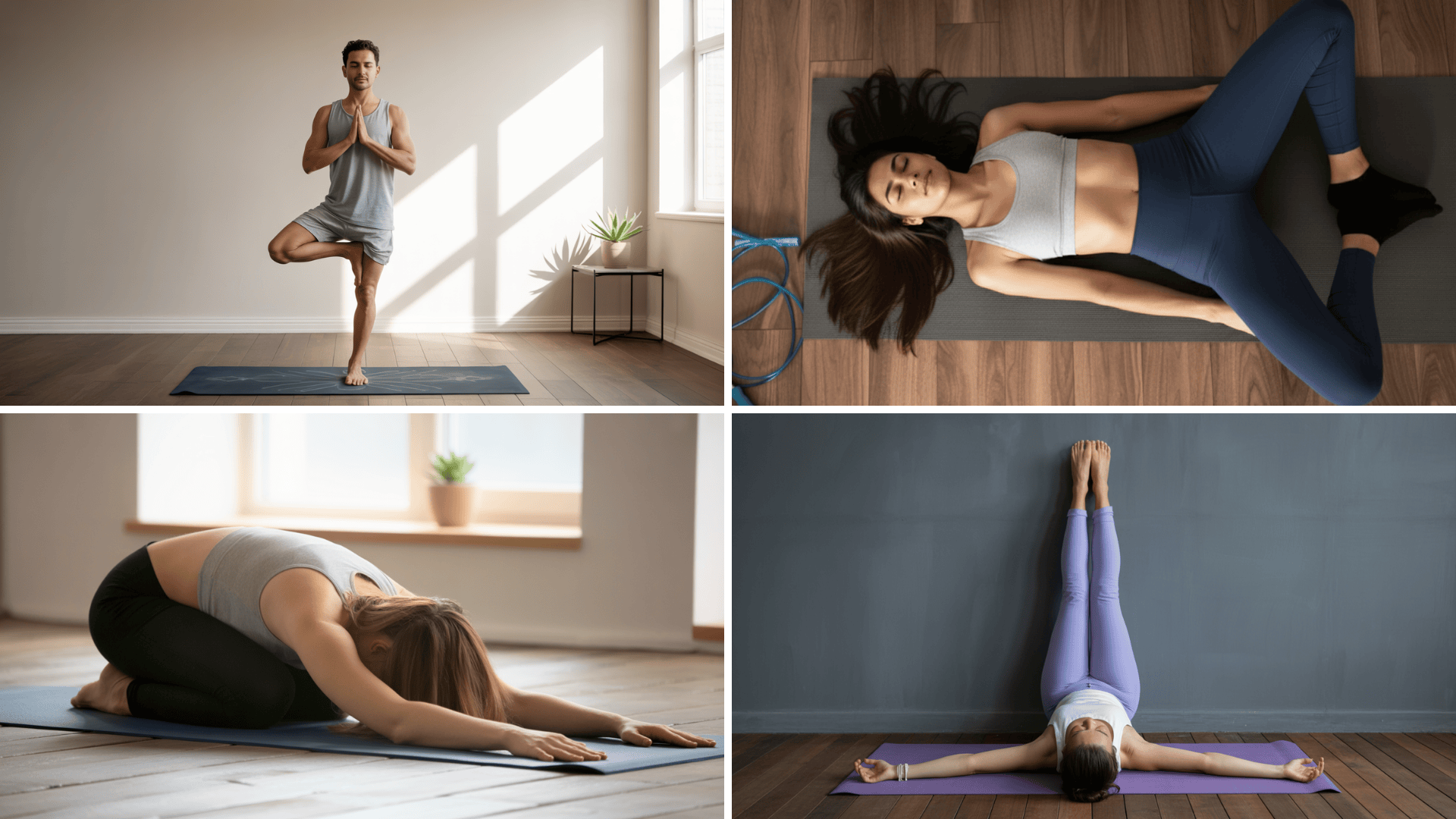Curious about somatic yoga? You’re not alone; it’s one of the fastest-growing wellness trends, but many people still don’t know what it actually is.
In this blog, I’ll break down everything you need to understand about somatic yoga in simple terms.
You’ll learn what makes it different from regular yoga, how it works with your nervous system, the key benefits you can expect, and whether it’s right for you.
By the end, you’ll have a clear picture of this gentle practice and know exactly how to get started.
Let’s get into it!
What is Somatic Yoga: Understanding the Basics
Somatic yoga flips traditional practice on its head. Instead of perfecting poses, you focus entirely on feeling. This approach blends yoga with body-centered awareness, asking “How does this movement feel?” rather than “Does it look right?”
Pioneered by Thomas Hanna and Moshe Feldenkrais in the mid-20th century, this practice uses deliberately slow movements to retrain your nervous system and release chronic tension.
Unlike traditional yoga’s focus on alignment and form, somatic yoga emphasizes internal experience.
You might spend minutes on one simple movement, noticing subtle shifts and letting your body guide the practice. It’s less exercise, more conversation with yourself.
What is Somatic Exercise & Somatic Movement?
Somatic exercise focuses on internal physical awareness rather than external performance. It emphasizes slow, mindful movements that help you reconnect with your body and release deeply ingrained tension patterns.
Key somatic movement techniques include:
- Feldenkrais, which uses gentle movements to improve function and self-awareness,
- Hanna Somatics, which targets chronic muscle tension through specific exercises, and
- Body-Mind Centering, which integrates body systems through conscious movement and touch.
Through conscious attention and deliberate movement, somatic exercises help improve mobility, reduce chronic pain, and restore natural movement patterns. The result is a body that moves more freely and responds better to stress.
How Somatic Yoga Differs from Traditional Yoga?
While somatic yoga shares some similarities with traditional yoga practices, its approach and philosophy set it apart in meaningful ways.
1. Focus on Sensation vs. Form/Alignments
Traditional yoga often emphasizes achieving perfect alignment and holding precise poses. Somatic yoga shifts this focus inward, prioritizing how movements feel rather than how they look.
Instead of striving for an ideal posture, you tune into your body’s sensations and make adjustments based on comfort and awareness. This internal focus helps release tension patterns that external alignment cues might miss.
2. Slower Pace and Mindful Internal Movement
Somatic yoga moves at a deliberately slower pace than most traditional yoga styles. Each movement is performed with careful attention, allowing time to notice subtle shifts in your body.
This unhurried approach gives your nervous system time to process and integrate new movement patterns, creating lasting change rather than temporary flexibility.
3. Use of Guided Awareness and Subtle Muscular Engagement
Rather than pushing into deep stretches or holding challenging poses, somatic yoga uses gentle, exploratory movements.
Teachers help you notice small muscular engagements and releases to uncover habitual holding patterns. This subtle approach often yields more profound results than forceful stretching by directly engaging the nervous system.
4. Typically Fewer or No Props vs. Iyengar or Hatha Yoga
While styles like Iyengar yoga rely heavily on props such as blocks, straps, and bolsters, somatic yoga typically uses minimal equipment.
The emphasis is on your body’s natural ability to sense and self-correct. This simplicity makes somatic yoga accessible and allows you to focus entirely on internal sensations without external distractions.
Simple Somatic Yoga Poses to Try
Let’s start with the most accessible and grounding positions, perfect for easing into somatic yoga practice:
1. Easy Pose (Sukhasana)
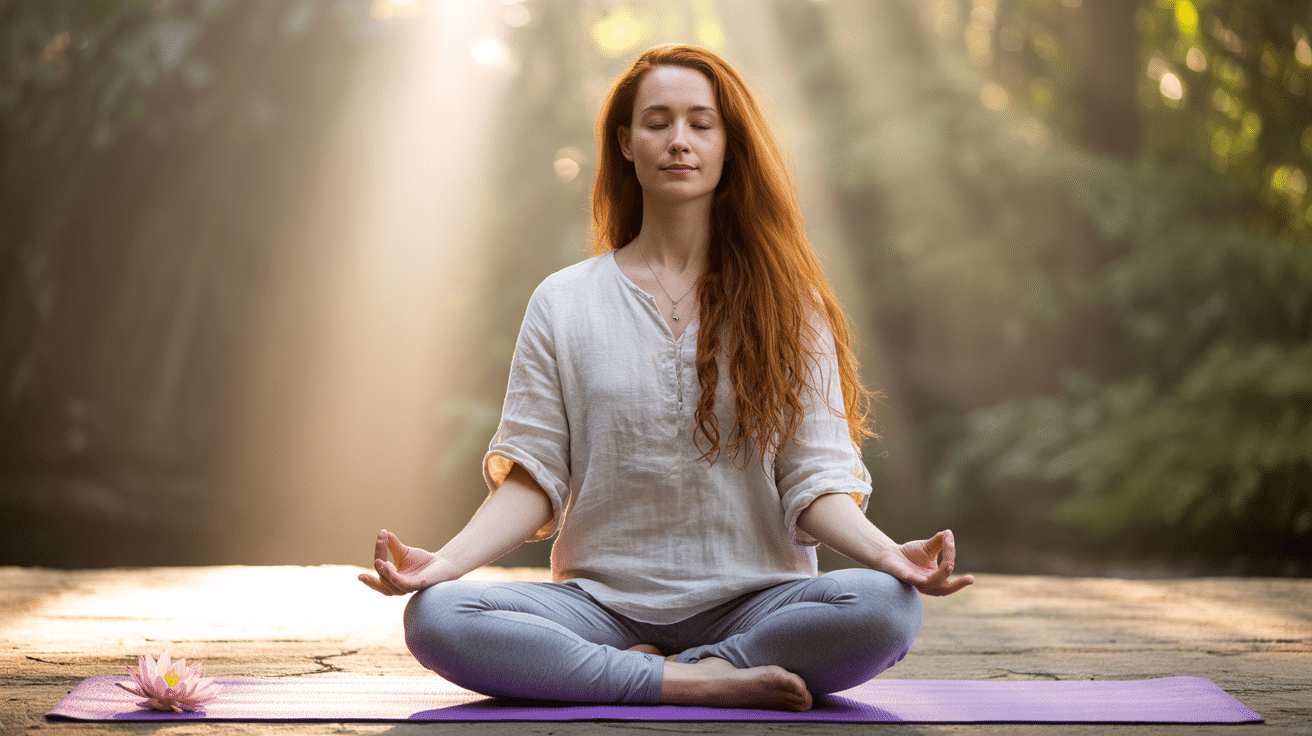
This foundational seated pose creates a calm, grounded base for breathing exercises that activate your parasympathetic nervous system.
- Step 1: Sit cross-legged on a mat or cushion, allowing your feet to rest naturally beneath your opposite thighs
- Step 2: Place your hands on your knees or in your lap, with palms facing up or down—whatever feels comfortable
- Step 3: Lengthen your spine by imagining a string pulling the crown of your head toward the ceiling
- Step 4: Close your eyes and take 5-10 deep breaths, focusing on slow, controlled inhales and exhales
Effects: This pose promotes relaxation and stress reduction, which directly supports healthy digestion by switching your body into “rest and digest” mode.
2. Mountain Pose (Tadasana)

Mountain Pose helps you feel steady and aligned. It strengthens awareness of posture, improves balance, and connects you to the earth, creating calm grounding for both body and mind.
- Step 1: Stand tall, feet hip-width apart, pressing evenly into the ground, feeling stable as if roots anchor you into the earth.
- Step 2: Drop shoulders naturally, allowing arms to hang relaxed, with palms facing inward or outward depending on what feels most comfortable.
- Step 3: Lengthen your spine by imagining a string gently pulling the crown of your head upward toward the ceiling, creating a spacious posture.
- Step 4: Breathe deeply and steadily, maintaining your balance and awareness, while softening your body and calming your nervous system.
Effects: Improves posture, balance, and grounding, while helping you feel stable and centered in both body and mind.
3. Tree Pose (Vrksasana)

Tree Pose strengthens your legs and focus. It improves balance, stability, and concentration, while encouraging a steady mind and cultivating inner calm through alignment and rooted grounding energy.
- Step 1: Stand upright, shifting weight onto one foot while keeping your torso tall, strong, and steady with awareness of grounding balance.
- Step 2: Place the other foot against the inner thigh or calf, avoiding the knee joint, pressing gently to create a stable foundation for balance.
- Step 3: Bring palms together in prayer position overhead, elbows open outward, extending upward with focus while maintaining centered, tall spine alignment.
- Step 4: Fix gaze on a stable point, breathing evenly, keeping balance steady, and allowing the mind to rest calmly inward.
Effects: Builds balance, strengthens legs, improves focus, and encourages a calm, steady state of mind.
4. Cat-Cow Pose (Marjaryasana-Bitilasana)

Cat-Cow gently mobilizes your spine while syncing movement with breath. It improves flexibility, reduces stiffness, and releases tension, creating mindful awareness of body alignment and smoother energy flow.
- Step 1: Begin on all fours, aligning wrists beneath shoulders and knees beneath hips, keeping spine neutral before starting gentle flowing movements.
- Step 2: Inhale, arch spine by lifting head and tailbone upward, drawing chest forward, expanding ribs, creating a gentle curve like Cow.
- Step 3: Exhale, round spine fully, pressing through palms, tucking chin toward chest and tailbone downward, drawing belly inward like a Cat.
- Step 4: Continue flowing with slow, steady breaths, transitioning between Cat and Cow, keeping rhythm smooth, mindful, and deeply connected.
Effects: Gently mobilizes the spine, reduces stiffness, improves coordination, and relieves tension in the back and neck.
5. Child’s Pose (Balasana)

Child’s Pose is deeply restorative. It calms the nervous system, gently stretches the hips, releases the lower back, and helps create a sense of safety, grounding, and inner stillness.
- Step 1: Kneel down, bring your big toes together, and spread your knees apart, sitting back on your heels before folding forward naturally.
- Step 2: Extend torso forward, arms reaching outward or resting beside body, lengthening spine while surrendering gently toward the mat.
- Step 3: Rest forehead gently on the ground, letting shoulders drop, hips soften, and body melt into the supportive surface.
- Step 4: Breathe slowly, deeply, and evenly, allowing every exhale to release tension and promote calm relaxation throughout your body.
Effects: Calms the nervous system, eases lower back tension, and creates a sense of safety and grounding.
6. Bridge Pose (Setu Bandhasana)

Bridge Pose energizes and opens the body. It strengthens glutes, supports spinal mobility, expands the chest, improves circulation, and relieves lower back tension, fostering balance between strength and relaxation.
- Step 1: Lie flat on your back, bend your knees, place your feet flat hip-width apart, close enough to touch your heels with your fingertips.
- Step 2: Press feet firmly into the ground, lifting hips upward gently, maintaining thighs parallel, creating a strong and stable foundation beneath.
- Step 3: Keep arms flat alongside body, palms pressing down, shoulders grounded, lengthening through spine as chest opens forward gently.
- Step 4: Hold pose for several breaths, maintaining steady alignment, then exhale slowly, lowering hips back down with control.
Effects: Strengthens glutes, opens chest, improves spinal mobility, and supports circulation while relieving tension in the lower back.
7. Supine Twist (Supta Matsyendrasana)
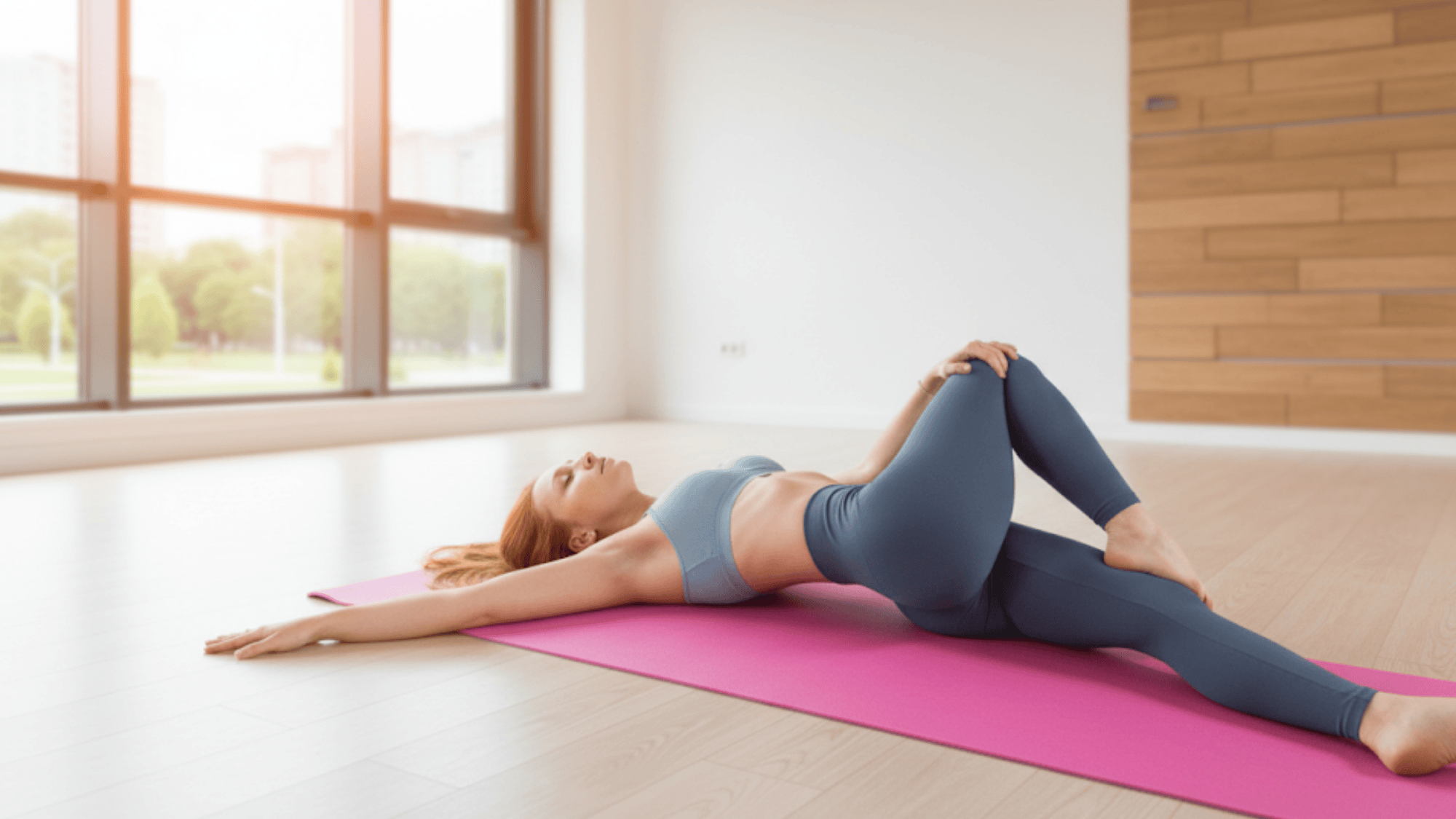
Supine Twist gently stretches the spine, massages abdominal organs, and calms the mind. It releases tension, aids digestion, and encourages deep relaxation while restoring balance throughout the body.
- Step 1: Lie comfortably on your back, bend both knees toward your chest, keeping your shoulders soft and your spine grounded into the mat.
- Step 2: Drop knees gently to one side, maintaining shoulders pressed down, allowing hips and spine to rotate slowly into a twist.
- Step 3: Extend arms wide in a T-shape, palms open, grounding shoulders evenly while chest gently opens toward the ceiling above.
- Step 4: Turn head in the opposite direction of knees, breathing slowly, creating gentle lengthening across the spine and calming awareness.
Effects: Releases spinal tension, massages abdominal organs, calms the nervous system, aids digestion, and helps quiet the mind.
8. Seated Forward Fold (Paschimottanasana)
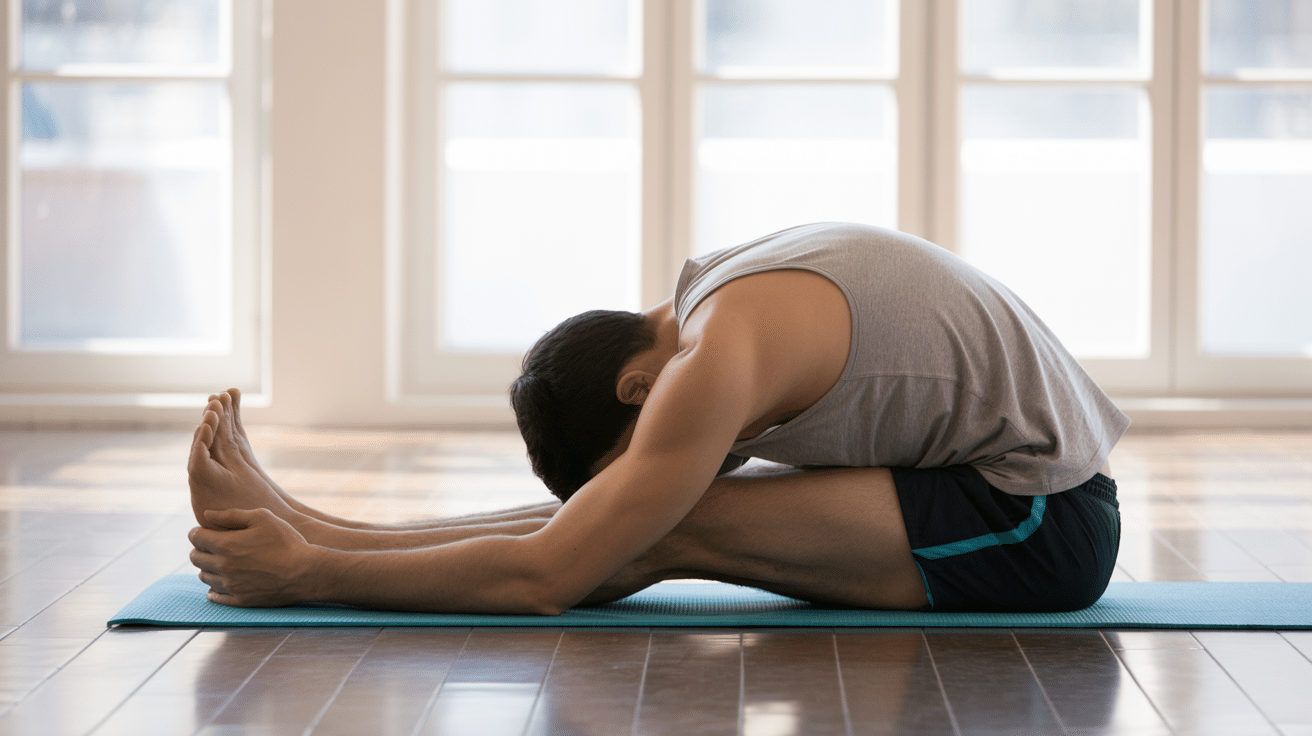
Seated Forward Fold soothes the nervous system, lengthens hamstrings, and relieves stress. It encourages relaxation, eases anxiety, and allows a deeper connection between breath, body, and mind.
- Step 1: Sit upright with legs stretched forward, feet flexed, keeping spine tall before starting movement, grounding sit bones evenly.
- Step 2: Inhale deeply, lengthen spine upward, lifting chest, creating space along torso before folding forward toward extended legs.
- Step 3: Exhale slowly, hinge from the hips, reaching hands toward the feet, keeping knees slightly bent if needed for comfort.
- Step 4: Hold fold gently, breathing deeply, relaxing head and neck, softening into posture, and surrendering tension with patience.
Effects: Stretches hamstrings and spine, soothes anxiety, promotes relaxation of the nervous system, and reduces overall stress.
9. Reclined Butterfly Pose (Supta Baddha Konasana)
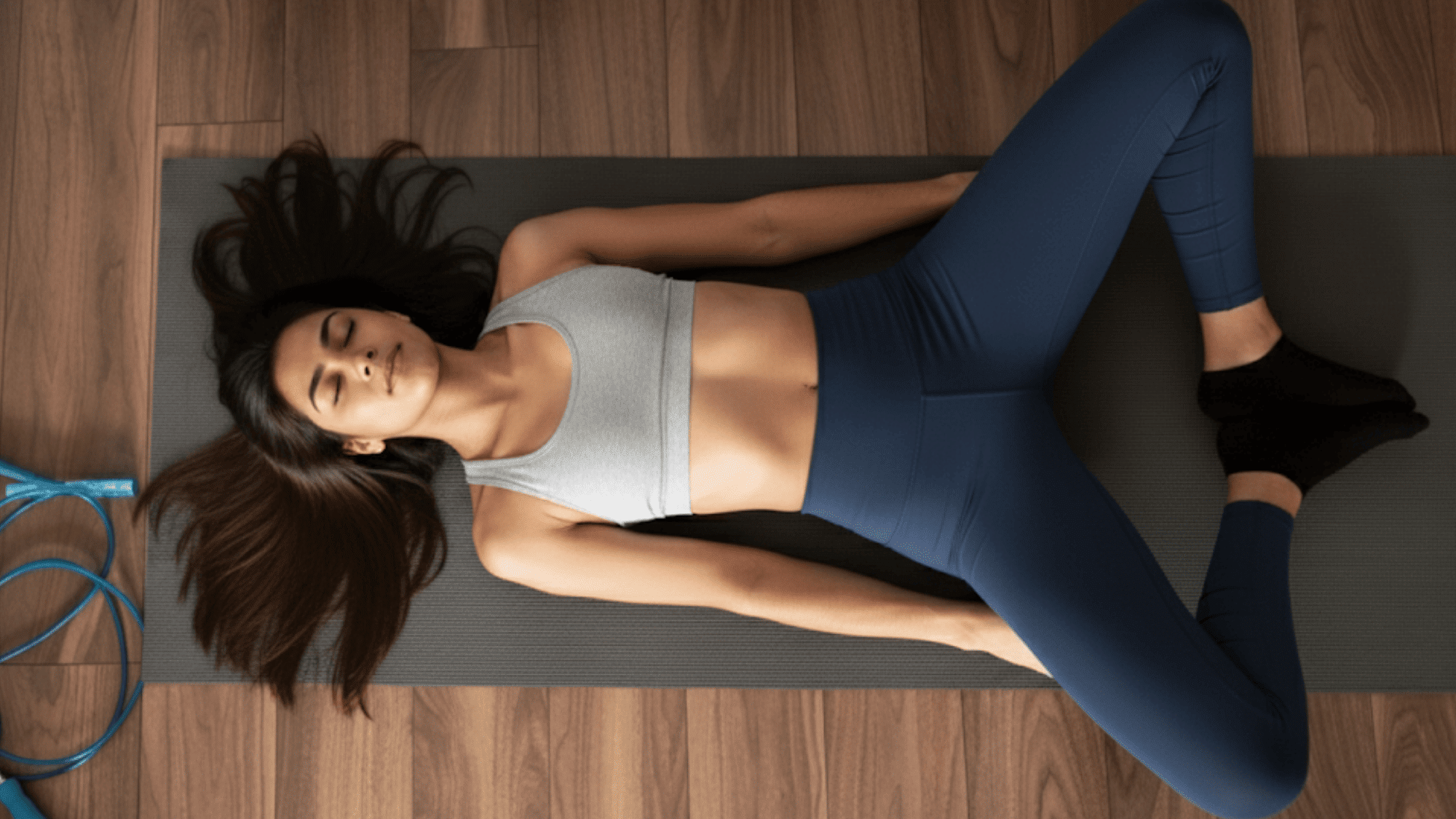
Reclined Butterfly is deeply restorative. It opens hips and chest, reduces fatigue, supports self-awareness, and promotes calm relaxation by grounding the body while encouraging steady, mindful breathing practice.
- Step 1: Lie gently on your back, bend your knees, and bring the soles of your feet together, letting your knees open outward comfortably.
- Step 2: Allow knees to fall toward the ground, supported naturally, opening hips and inner thighs while staying relaxed.
- Step 3: Place hands softly on belly or alongside body, palms up, connecting with breath and inner awareness calmly.
- Step 4: Breathe deeply, letting chest expand, hips release, and body sink, embracing quiet rest and deep restorative calm.
Effects: Opens hips and chest, reduces fatigue, encourages mindfulness, and supports deep relaxation of the body and mind.
10. Corpse Pose (Savasana)
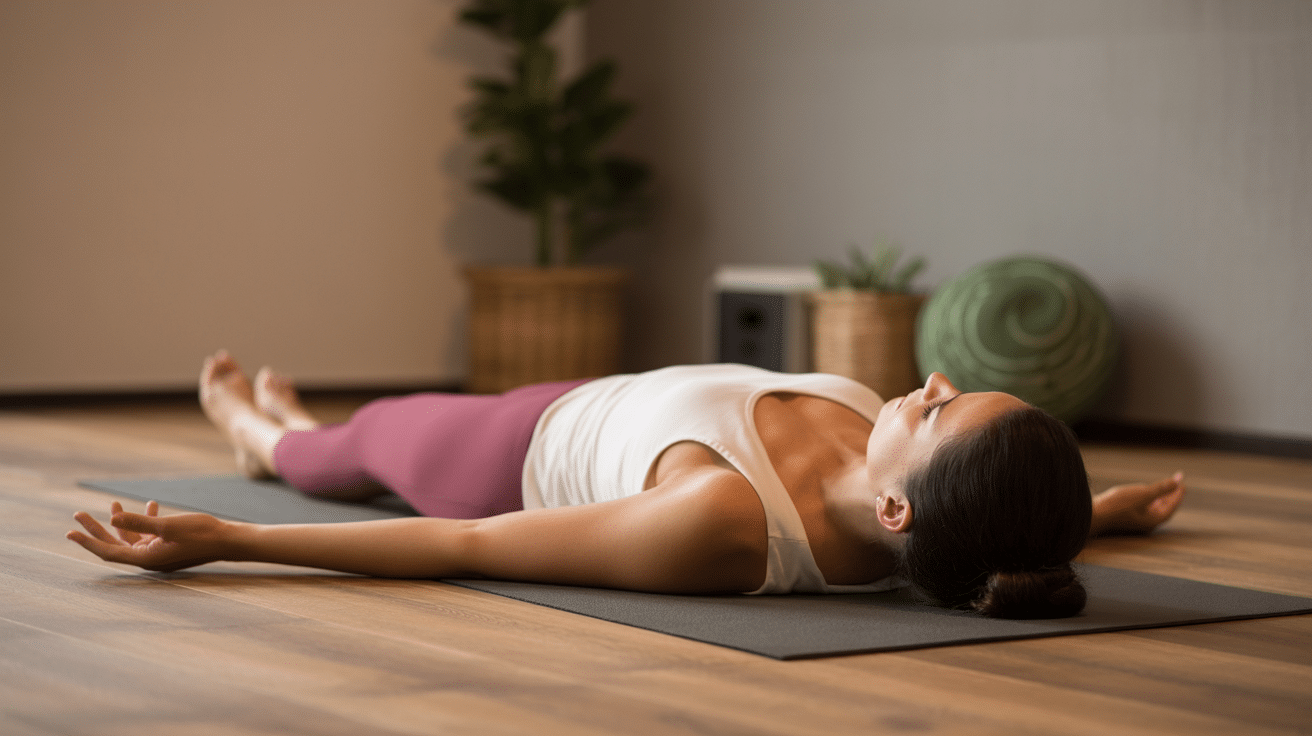
Corpse Pose restores energy and integrates practice benefits. It reduces stress, promotes total relaxation, and encourages deep inner stillness, allowing the body and mind to reset fully.
- Step 1: Lie flat comfortably on your back, arms relaxed alongside your body, legs extended naturally, and feet falling outward gently.
- Step 2: Release shoulders downward, soften jaw and face, allowing entire body to sink heavier into the mat without resistance.
- Step 3: Close eyes softly, focusing inward, letting go of physical tension, inviting complete stillness and quiet calm awareness.
- Step 4: Allow breath to flow naturally, resting deeply, surrendering completely, and absorbing the quiet integration of the entire practice.
Effects: Restores energy, reduces stress, quiets the mind, promotes total relaxation, and integrates the benefits of the yoga practice.
11. Legs-Up-the-Wall Pose (Viparita Karani)
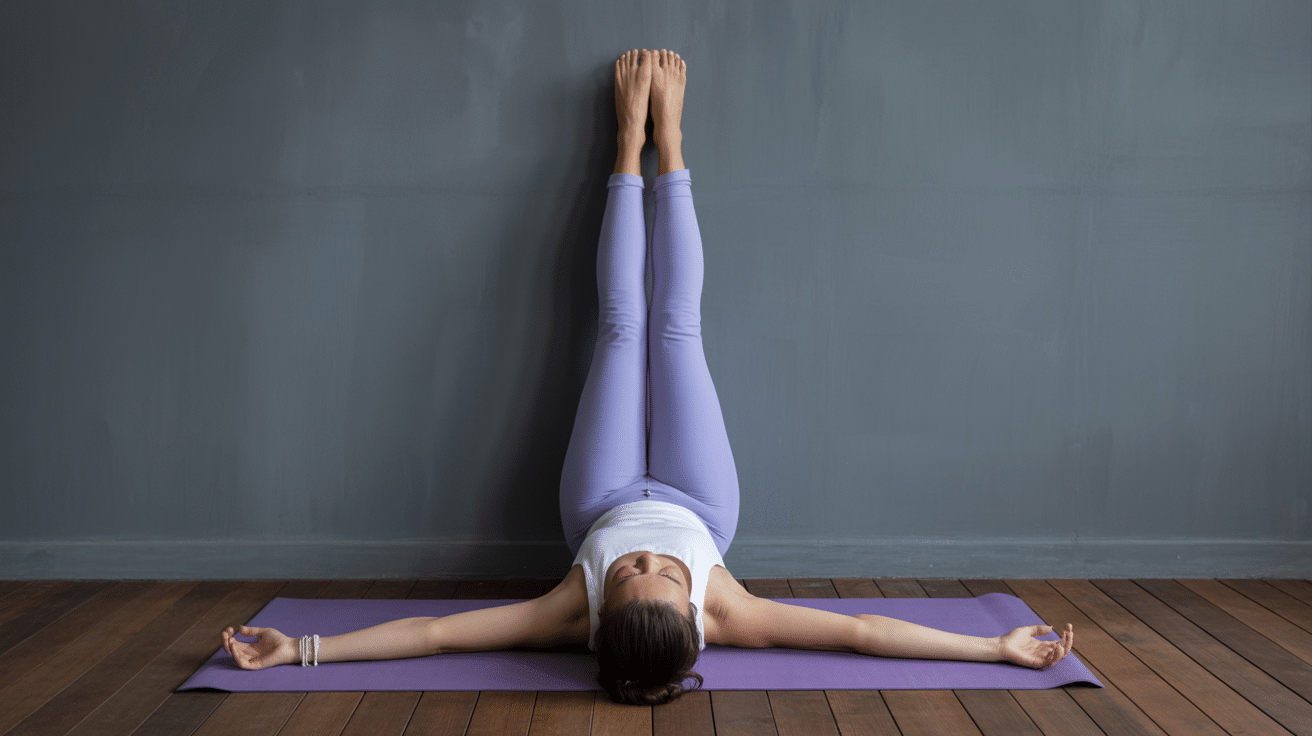
Legs-Up-the-Wall eases tired legs, improves circulation, and calms the nervous system. This restorative inversion supports recovery, deep relaxation, and creates gentle renewal of energy for overall balance.
- Step 1: Sit sideways close to a wall, shifting hips toward it, then gently swing legs upward while reclining backward.
- Step 2: Adjust hips comfortably near the wall, extend legs vertically, keeping them straight but relaxed without overstraining hamstrings.
- Step 3: Rest arms outward by your sides, palms open upward, allowing shoulders to soften gently into supportive ground.
- Step 4: Close eyes, breathe slowly and evenly, staying in the pose for several minutes, releasing stress and inviting deep renewal.
Effects: Improves circulation, reduces swelling in legs, calms the nervous system, relieves fatigue, and supports deep relaxation and recovery.
Benefits of Somatic Yoga
Somatic yoga offers a holistic approach to wellness that addresses both physical and mental health. Here’s how this gentle practice can transform your body and mind:
Physical Benefits:
- Increased flexibility through slow, mindful movements that release muscle tension.
- Improved posture by retraining the body to recognize and correct habitual misalignments.
- Reduced chronic pain as you learn to release deeply held patterns of muscular contraction.
Mental Benefits:
- Stress reduction through conscious breathing and relaxation techniques.
- Strengthened mindfulness by bringing focused awareness to each movement and sensation.
- Greater body awareness that helps you understand and respond to your physical needs.
Nervous System & Emotional Benefits:
- Regulates the nervous system by activating the parasympathetic response for deep relaxation.
- Facilitates emotional release by addressing trauma and tension stored in the body.
These combined benefits make somatic yoga a powerful tool for overall wellness. The practice helps you reconnect with your body, calm your mind, and create lasting positive changes in how you move and feel.
How to Practice Somatic Yoga at Home?
If you want to start practicing somatic yoga at home, you absolutely can; it’s very simple and doesn’t require much equipment. Here’s a weekly guide to help you get started:
| Days | Focus | Practice | Time |
|---|---|---|---|
| Day 1 | Awareness | Easy Pose + Mountain Pose | 10–15 min |
| Day 2 | Mobility | Cat-Cow Pose + Supine Twist | 15–20 min |
| Day 3 | Relaxation | Child’s Pose + Legs-Up-the-Wall Pose | 10–15 min |
| Day 4 | Strength & Openness | Bridge Pose + Seated Forward Fold | 15–20 min |
| Day 5 | Balance | Tree Pose + Mountain Pose | 15–20 min |
| Day 6 | Release | Reclined Butterfly Pose + Easy Pose (breath focus) | 10–15 min |
| Day 7 | Integration | Gentle flow of all poses + Corpse Pose | 20–25 min |
Each day focuses on a different benefit, like balance, relaxation, or awareness. If a pose feels uncomfortable, skip it or replace it with another from the list.
The goal isn’t to “do it right,” but to notice how your body feels and enjoy the process.
Final Thoughts
When I first started learning about somatic yoga, I didn’t expect such small, gentle movements to have such a significant impact.
But the more I practiced, the more I realized how powerful awareness can be. It’s not about stretching deeper or perfecting a pose; it’s about listening to your body and creating space for release and healing.
If you’re looking to ease pain, manage stress, or reconnect with yourself, this approach provides a safe and simple way to start.
Ready to experience the benefits yourself? Start with just one gentle somatic yoga pose today and notice how your body and mind begin to shift.

